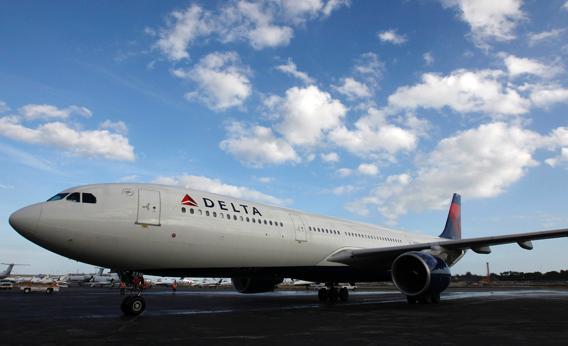Last week, low-level United frequent fliers such as myself got a bit of bad news. The airline is going to make it harder to gain elite status levels by adding a spending requirement to qualify on top of the existing mileage requirement. Delta did the same thing in January. So far, US Airways and American have avoided this move—but they’re in the process of merging, and airline mergers all but inevitably lead to some kind of downgrading of elite status. Airlines also tend to move in packs with policies like these, so presumably the new American will follow Delta and United’s lead when it combines its two frequent flier programs. This aviation news comes on the heels of devaluations of rewards programs at Hilton, Marriott, and IHG’s Priority Club.
But even though these moves are giving rewards-point nerds a case of heartburn, they’re fundamentally a good sign for America that shows economic recovery is underway. That’s because elite status is a way to extract some useful value out of unsold inventory.
The whole point of a business-class seat, for example, is to be very expensive. Unreasonably expensive, in fact. So expensive that it’s not clear anyone would ever really pay that much. After all, it’s called “business class” for a reason: The executives up front aren’t paying out of pocket, but flying on the company dime at shareholder expense. Or maybe the flier is a lawyer or consultant whose airfare is billed to a client, and it’s the owners of the client company’s stock that ultimately carry the cost. This dynamic means airlines can get away with very high asking prices. But high prices lead to some unsold inventory, and to keep up the charade, they can’t just discount the extra seats in an obvious way. Free upgrades to frequent fliers get the job done without lowering the official price.
With hotels the issue is often seasonality. You want to build enough hotel capacity to make big profits during the high season. That leaves you with extra rooms when demand is less robust. But an empty hotel room is barely any cheaper to operate than a full one, and since the cost of a hotel room is only one piece of the overall cost of a trip, it can get hard to fill rooms even with aggressive discounting.
In both cases, deploying excess inventory as giveaways to members of loyalty programs is a good way to get some value out of that excess inventory. Bumping a few passengers up to better seats or better rooms when they’d otherwise be empty has no real cost to the airline or hotel. But it does help get the frequent traveler addicted to the brand he has elite status with. Whenever I fly to see my in-laws in San Antonio, I’m willing to pay a little bit more or accept a slightly inferior schedule in order to go on United via Houston rather than American via Dallas.
So why are things getting stingier? It’s simple: Excess capacity is also partially a feature of the business cycle, and the economy’s getting a lot stronger. All year, hotel occupancy rates have been in line with what we saw before the recession hit, and way above their lows of 2009. Revenue per room is also rising (PDF), meaning the industry’s in substantially better shape than it’s been in years. For airlines, too, things are looking up. According to the U.S. Department of Transportation, over the 12-month period that ended in March, America’s airlines flew 6.5 million more passenger-miles than in the previous 12 months (not counting charter flights). Strikingly, they pulled that off despite having about 1.8 million fewer seat miles available to fly. More passengers on fewer flights.
Less excess inventory means there’s less to give away to loyalty program customers. That means the time is right to devalue points and tighten up elite membership criteria. But fuller planes and hotels are both a symptom of an improving economy and a driver of future economic growth.
People travel more when the economy is better. They have more cash in their pockets, so they can take more trips. More business activity means more business travel. And when firms are flush with cash, they get a little less stringent about approving employee requests to attend conferences and call it work. But the really good news is that tighter inventory in the travel industry is a sign of more growth to come. If America’s existing stock of planes and hotel rooms is full, that means it’s about time to start building new ones again. That will mean both direct jobs in construction and manufacturing, and indirect jobs when the time comes to staff up the new facilities. Projects are cheap to finance these days thanks to low interest rates. And now with recession-era vacancy rates falling, it’s a good time to get cracking. Frequent travelers’ pain this summer will be the broader economy’s gain as new travel demand finally means demand for more workers.
